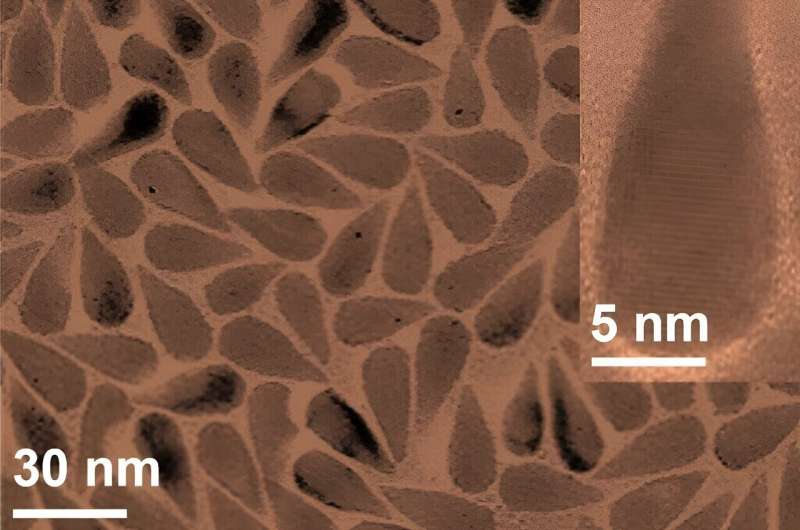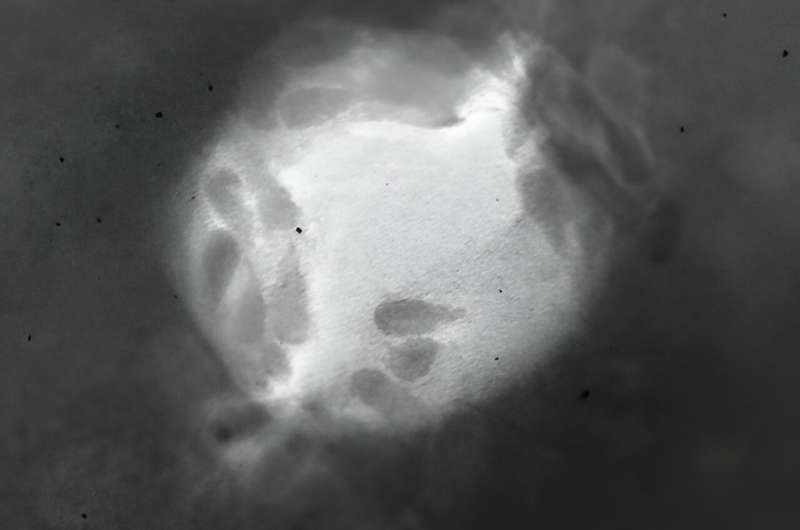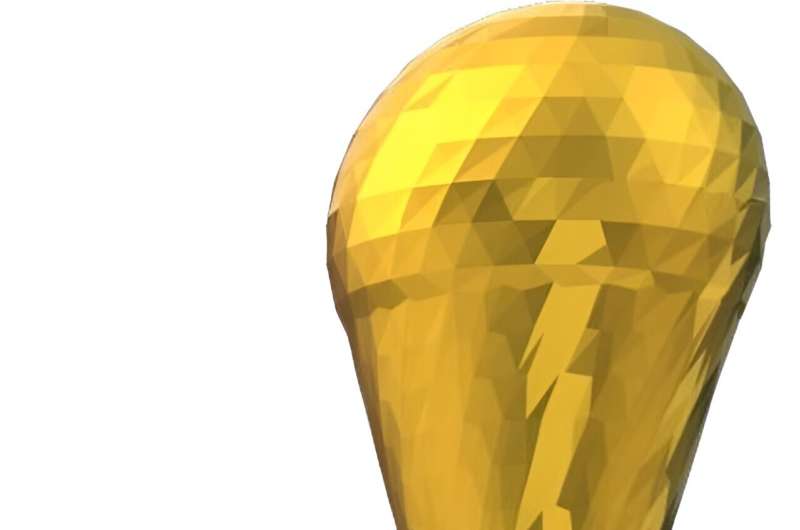This article has been reviewed according to Science X's editorial process and policies. Editors have highlighted the following attributes while ensuring the content's credibility:
fact-checked
trusted source
proofread
Nanoparticles target multiple COVID variants through the twist in the spike protein

Teardrop-shaped particles designed to inactivate multiple strains of the SARS-CoV-2 virus could one day complement existing treatments for COVID-19, according to a new study led by researchers at the University of Michigan and Jiangnan University in Wuxi, China.
The research is published in the journal Proceedings of the National Academy of Sciences.
The COVID mRNA vaccines have been highly effective at preventing severe cases of the disease, but COVID-19 can still hospitalize vaccinated individuals, especially the elderly. New strains also continue to emerge, requiring constant updates to vaccines to maintain their effectiveness.
"Our immune system has to learn about a virus to generate the antibodies to fight back against infection, but by that time it may be too late for some people," said Nicholas Kotov, the Irving Langmuir Distinguished University Professor of Chemical Sciences and Engineering at U-M and co-corresponding author of the study.
Treatments are essential to help people at risk of severe COVID-19, but there are only a few options on the market today. Pfizer's Paxlovid antiviral pill has become the go-to treatment after it received emergency use authorization from the Food and Drug Administration, with clinical trials showing hospitalization risk reduced by 89%. However, it may only reduce that risk by 50%, possibly as low as 26%, and the pill might not be appropriate for patients with cardiovascular disease.
"The nanoparticles could help vulnerable people during outbreaks of pandemic virus," said Liguang Xu, professor of food science and technology at Jiangnan University and co-corresponding author of the study.

The SARS-CoV-2 spike protein—the piece of the virus that both allows it to attack human cells and be attacked by the immune system—is made of building blocks called amino acids, and the sequence of amino acids may change from one strain of the virus to another. Antibodies tend to target a specific amino acid sequence, which is why these changes can enable new strains to evade immunity acquired from prior exposure to other SARS-CoV-2 variants or older versions of the mRNA vaccines.
Instead, the team's nanoparticles work on the direction and degree of the twist in spike proteins, also known as their chirality.
"The overall structures of coronavirus spike proteins are similar, and the chirality of these spike proteins is the same, so the particles can interact with many coronaviruses," said Chuanlai Xu, professor of food science and technology who led the work done at Jiangnan University.
The team tested the particles on common cold viruses and the Wuhan-1 and omicron variants of SARS-CoV-2. They did this by treating mice infected with pseudoviruses that bore coronavirus spike proteins on their surfaces, with different pseudoviruses representing different strains. When the mice inhaled the particles, the treatment cleared 95% of the viruses from their lungs, and they could resist infection for up to three days.

Chirality comes in two directions, left- and right-handed. Coronavirus spike proteins have left-handed twists, so left-handed twists at the nanoparticles' points fit best.
"The matching left-handed twist makes the virus better at binding with the particles than with animal and human cells," said André Farias de Moura, associate professor of chemistry at the Federal University of São Carlos in Brazil and a co-author of the study. "This makes it more likely that the virus will be captured by the particles before it has a chance to infect cells."
The researchers still don't know how quickly the particles are expelled from the body and whether they come with any dangerous side effects in humans, but they hope to learn those details with further study.
The study also included researchers at the Chinese Academy of Medical Sciences and Peking Union Medical College and the Brazilian Center for Research in Energy and Materials.
More information: Rui Gao et al, Tapered chiral nanoparticles as broad-spectrum thermally stable antivirals for SARS-CoV-2 variants, Proceedings of the National Academy of Sciences (2024). DOI: 10.1073/pnas.2310469121
Provided by University of Michigan





















